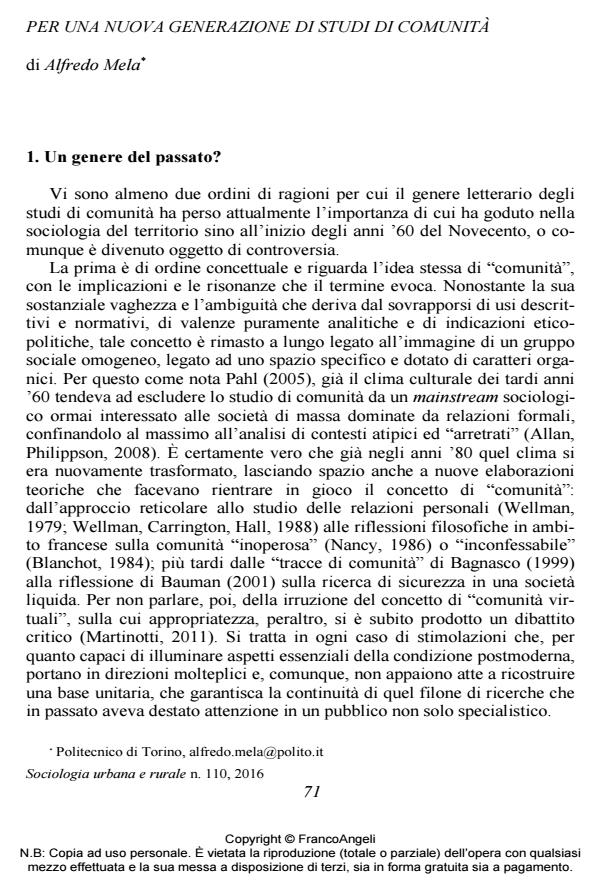Towards a new generation of community studies
Journal title SOCIOLOGIA URBANA E RURALE
Author/s Alfredo Mela
Publishing Year 2016 Issue 2016/110
Language Italian Pages 15 P. 71-85 File size 478 KB
DOI 10.3280/SUR2016-110006
DOI is like a bar code for intellectual property: to have more infomation
click here
Below, you can see the article first page
If you want to buy this article in PDF format, you can do it, following the instructions to buy download credits

FrancoAngeli is member of Publishers International Linking Association, Inc (PILA), a not-for-profit association which run the CrossRef service enabling links to and from online scholarly content.
The article starts by noting that community studies now seem an outdated kind of sociological research. The first part will examine the reasons for this loss of interest, linking it to the transformations that occurred in recent decades in the process of urbanization on a global scale. The second part will introduce some considerations that explain the conditions under which the study of individual territorial entities may also be relevant in the contemporary urban sociology. Such studies should focus not so much on the description of the social characteristics of specific communities, but rather on the analysis of the territorial capital and projects present in them.
Keywords: Community, urbanization, projects, territory, sociology, individuality.
- Le imprese recuperate dai lavoratori in Italia. Una sperimentazione territoriale di reciprocità Romolo Calcagno, in SOCIOLOGIA URBANA E RURALE 116/2018 pp.59
DOI: 10.3280/SUR2018-116005
Alfredo Mela, Per una nuova generazione di studi di comunità in "SOCIOLOGIA URBANA E RURALE" 110/2016, pp 71-85, DOI: 10.3280/SUR2016-110006